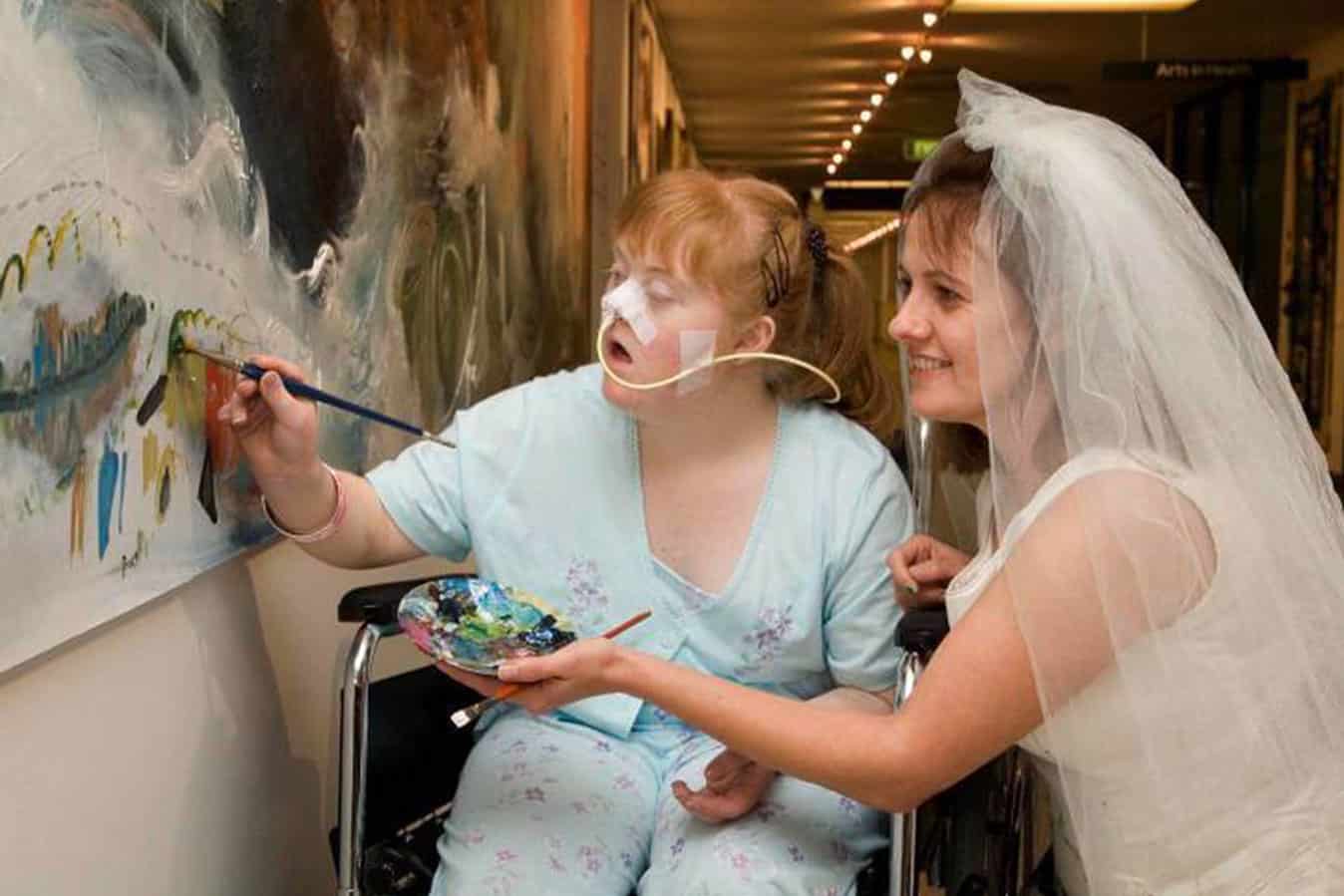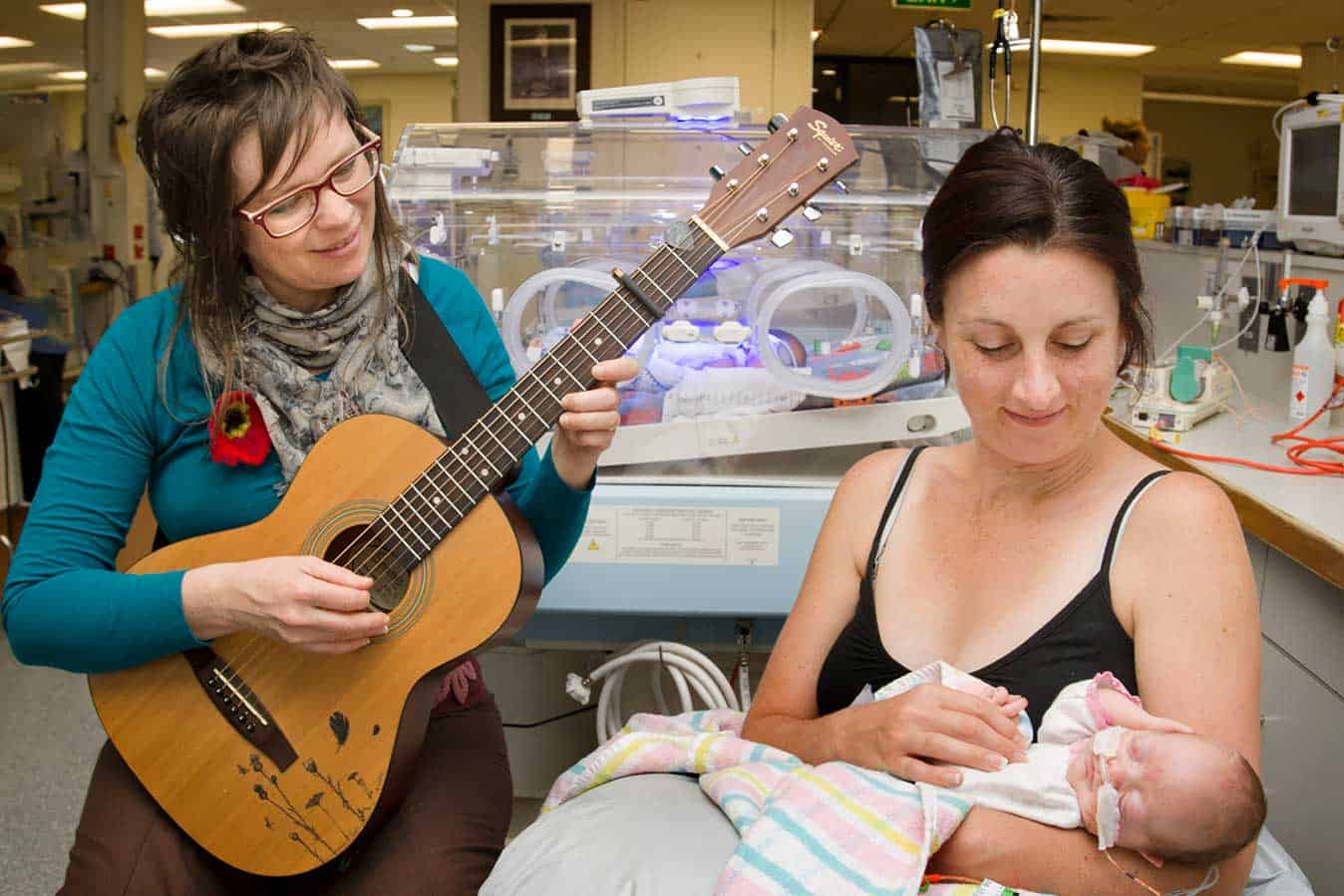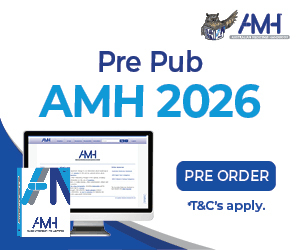The soothing sounds of a harpist drifting throughout wards, patients expressing their creativity through painting or jotting down their thoughts in a journal, nurses taking time out from the hustle and bustle to practice mindfulness.
This is what a typical week looks like at Arts in Health at FMC, a pioneering hospital-based arts in health program run by Flinders Medical Centre (FMC) in South Australia established more than two decades ago.
The program’s team of arts managers, arts facilitators and art and music therapists work across all wards and public spaces of the hospital, providing performance-based and interactive arts activities in a bid to make FMC a more supportive, welcoming place to visit and stay.
Program manager Sally Francis, a UK-trained nurse and artist and arts manager who came on board 17 years ago, says the focus is on integrating the arts into health so that patients, staff and visitors have access to a beneficial outlet during an often challenging period in their lives.
“A lot of what we do has a therapeutic benefit in that it provides a distraction, it encourages people to socialise, it builds new skills, and it’s a way for people to express themselves during their hospital experience,” Ms Francis says.
“We support patients in their recovery, as well as their carers, and in addition to that, we support staff as well through services like meditation and training.”
As well as running daily activities, Ms Francis says the program’s team also respond to specific patient referrals and requests and work directly with patients towards achieving clinical outcomes.
For example, the music therapist might help assist with speech development after a patient has suffered a stroke.
“There’s a certain type of aphasia where you lose the ability to speak, but you can still sing,” Ms Francis explains.
“So the music therapist actually works with someone to teach them to sing things like ‘I need a drink of water’, things like that. Then they take away the instrument or the accompaniment and take away the intonation. So someone then learns to speak again from the ability to sing.”
As the largest and oldest hospital-based arts program in Australia, Ms Francis says Arts in Health at FMC has inspired similar programs in other hospitals across Australia.
But she admits it’s been a long road to acceptance and recognition for the program’s valuable contribution.
Its evolution involves shifting from initially providing roving arts activities across the hospital to adding a more targeted patient referral system to respond to specific requests for support.
“When we started out, there was certainly a real air of scepticism about why we were spending money on the arts when we needed new hospital equipment,” she recalls.

“But the longer we’ve been at the hospital, people went from scepticism to accepting we were there to us now being totally embedded in a service delivery framework. Now, it’s much more accepted and understood that arts can benefit health and recovery because there is increasing evidence-base around it; there’s lots of research and evidence that shows the arts can make a difference.”
Ms Francis cites one clinical study, undertaken at Chelsea and Westminster in the UK, which found the mental health and experiences of patients undergoing invasive examinations, surgery, chemotherapy and emergency care improved when exposed to an art intervention, including visual, music and performance-based art.
“It showed that people who had art around them in hospitals could stay in hospital less time, need less pain relief, their immune systems were boosted, and levels of stress and depression were alleviated in patients and in staff,” she says.
“All these things contribute to clinicians and healthcare services realising and understanding that it can make a huge difference. It’s about holistically looking after the whole of the patient and not just responding to their medical condition.”
A 2009 evaluation of the Arts in Health at FMC program found feedback from patients, carers and staff identified many beneficial effects for patient care including reduced stress and anxiety, a calm and relaxing atmosphere, improved mood and distraction from illness and pain.
Staff reported varied responses, including initial uncertainty and surprise regarding the program, along with relieving the grind of routine and feeling supported in their work with patients.
“These corridors would have been extremely barren and depressing without the paintings,” one staff member said.
Ms Francis says the program has received similar positive feedback from nurses.
“I think because we are outside of the nursing profession, we are able to provide a different level of support and understanding to nurses,” she suggests.
“They benefit from the work we do with music meditation and relaxation, so we’re able to support them in that way, and I think what the program does is it adds another tool for them to use. Nursing staff don’t have time to be making up art packs and things like nurture packs. We provide end-of-life nurture packs which are boxes of supported sensory things like a knitted knee blanket, a shell from the beach, lavender massage oil, an LED candle, a journal for your thoughts, and we give these to the nursing staff to give to patients and their carers at end of life. So I think for us, to be able to support the nursing staff to deliver a more nurturing care is fantastic.”
Ms Francis stresses that the program’s services are all free and optional, and nobody is forced to engage.
“Because we have a range of activities we can hopefully meet most patients where they’re able to engage, or they want to engage; it could be the harpist goes to play on the ward, and that’s a really passive way patients can lie in bed and drift off to sleep, they don’t have to engage at all, to a one-on-one session for an hour-and-a-half with an artist or an art therapist where they can get a lot of individual benefit from an activity.
“We tailor our work to meet individual patient needs, but what I also say is that we are something patients can say no to. There’s not much you can say no to in a hospital – somebody says ‘I’m coming to take your blood or have an X-Ray’, you can’t say ‘no I’m not going’. Whereas with Arts in Health they can say ‘I’m not interested, I’m too tired’. It’s about control as a lot of what we do gives patients choice and control.”
Ms Francis says there is always room for the program to evolve and innovate as it writes its next chapter.
A prime example is its recent ability to adapt in the face of the COVID-19 pandemic, with the program launching a YouTube channel to allow it to continue delivering its services to patients while adhering to social distancing and increased infection control protocols.
Ms Francis believes the Arts in Health at FMC has a bright future ahead as more and more people realise the power art can have.
“It’s just overwhelmingly positive, the way that the arts program can change someone’s interaction with the hospital and support them at the time when they might be the most vulnerable in their life.”
To find more information about Arts in Health at FMC click here








